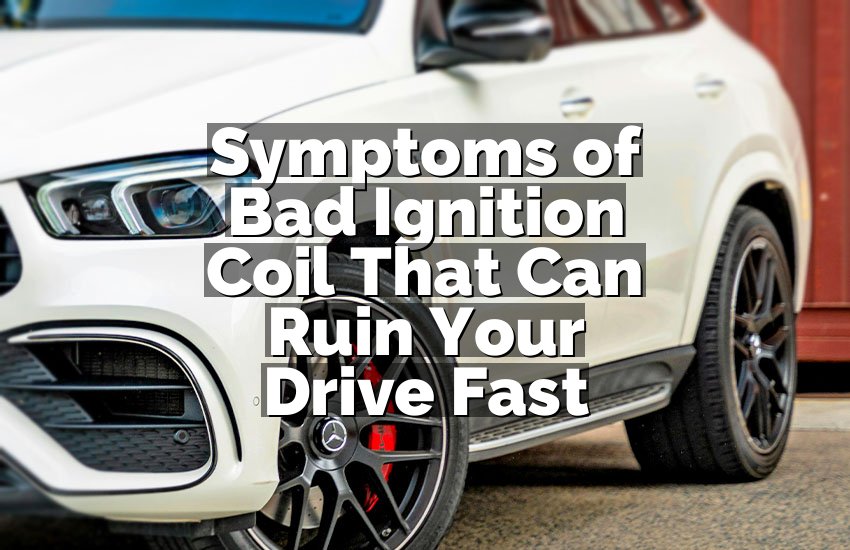You’re in the driver’s seat, ready to go, and suddenly your Chevy Impala key won’t budge. Panic hits, frustration builds, and you’re thinking, “Not today, right?” In this article, we’re going to tackle that sticky situation together.
If your Chevy Impala key is stuck in the ignition, first make sure the gear is in Park. Next, jiggle the steering wheel gently while trying to turn the key. Check for debris in the ignition cylinder. Applying a small amount of graphite lubricant can help loosen a sticky key. Avoid forcing it too hard to prevent breaking it. If nothing works, inspect the key for wear or damage and consider calling a professional locksmith. Finally, staying calm and methodical prevents further damage and saves money in the long run.
Check the Gear and Steering Wheel Position
One of the most common reasons your Chevy Impala key is stuck is that the car isn’t fully in Park. Even if the gear lever looks like it’s in the right spot, sometimes it’s slightly off. Push the brake pedal down firmly and move the gear selector completely into Park. At the same time, gently wiggle the steering wheel back and forth. A tiny movement can release tension on the ignition lock, allowing the key to turn smoothly.
Often, the steering wheel locks if it’s under pressure, especially if the car was turned sharply before parking. Try turning the wheel slightly while gently trying to remove the key. Avoid forcing it, because too much pressure can damage the ignition cylinder. This simple alignment trick often solves the problem in seconds, saving you unnecessary stress and a possible locksmith call.
- Ensure the gear is fully in Park
- Press the brake firmly
- Wiggle the steering wheel slightly
- Avoid forcing the key
Inspect the Key for Damage or Wear
Keys that are bent, worn, or chipped can easily get stuck in the ignition. Take a close look at your Chevy Impala key under bright light. Check for any bends along the edges or signs of heavy wear. Even small imperfections can prevent smooth turning in the ignition cylinder. If the key looks damaged, try using a spare key if available. Often, a spare works perfectly while the main key struggles.
If your key is worn down, it’s better to replace it rather than risk breaking it inside the ignition. Broken keys can be very expensive to extract, and they complicate the repair. Keep your spare key handy and consider making an extra one. Sometimes, simply switching to a fresh key solves the problem immediately, letting you continue your day without stress.
- Check for bends or chips
- Use a spare key if available
- Avoid using a worn key repeatedly
- Replace the key if it’s damaged
Clean the Ignition Cylinder Carefully
Dirt, dust, or debris inside the ignition cylinder can jam your key. Start by inserting a thin object like a paperclip carefully to remove loose particles. Avoid using anything too thick that could scratch or damage the cylinder. Once the debris is cleared, apply a small amount of graphite-based lubricant into the ignition slot. Graphite works better than oil because it won’t attract more dust over time.
After applying the lubricant, insert the key and gently wiggle it back and forth while trying to remove it. Often, this loosens any particles that were causing the key to stick. Avoid using too much force, as that can break the key. This cleaning method is simple, inexpensive, and prevents future issues if done periodically.
- Remove dirt carefully
- Use graphite lubricant, not oil
- Gently wiggle the key
- Avoid excessive force
Lubricate and Gently Jiggle the Key
If your key still resists, lubrication combined with gentle movement is usually very effective. Use a small amount of graphite lubricant in the ignition slot. Insert the key slowly, then wiggle it gently while trying to turn it. Sometimes, the key gets stuck due to friction inside the lock mechanism. Lubrication reduces this friction, making it easier to remove.
Never force the key. Pulling too hard can snap it inside the ignition, which is far more complicated to fix. Take your time, gently rocking the steering wheel while slightly turning the key. A few careful tries usually allow the key to slide out smoothly. Patience is key here, literally and figuratively.
- Apply graphite lubricant
- Wiggle the key gently
- Rock the steering wheel slightly
- Avoid forcing it
Reset the Steering Lock Mechanism
Sometimes, the key is stuck because the steering lock mechanism is engaged. This happens when the steering wheel is turned after the car is turned off. To reset it, hold the key in the ignition and slightly turn it while gently moving the steering wheel back and forth. This releases tension in the lock. If your car has an electronic steering lock, try turning the key slowly while pressing the brake.
After the steering lock is reset, the key should slide out easily. Repeat the process a couple of times if necessary. Always be gentle, and if you feel resistance, stop and reassess. This method avoids breaking the key or damaging the ignition cylinder and ensures the car remains safe to drive.
- Hold the key while turning the wheel
- Release tension gently
- Use brake pedal if electronic lock
- Repeat carefully if needed
Call a Professional if All Else Fails
If none of the above methods work, it’s best to call a professional locksmith or a certified mechanic. Trying to force the key can result in a broken key stuck in the ignition or a damaged cylinder, which costs more to fix. A professional has the right tools and knowledge to safely remove the key without causing further damage.
While waiting for assistance, avoid jiggling the key excessively. Document the situation and check if your car warranty or roadside assistance covers ignition issues. Professionals can also provide advice on key replacement or ignition repair. Calling for help early can save you time, money, and frustration in the long run.
- Contact a certified mechanic or locksmith
- Avoid forcing the key
- Check warranty or roadside assistance
- Consider ignition repair or key replacement
Final Thoughts
Dealing with a Chevy Impala key stuck in the ignition can be frustrating, but it’s manageable. By checking the gear and steering wheel, inspecting the key, cleaning and lubricating the ignition, and gently jigging the key, most problems are resolved. Always stay calm, avoid force, and call a professional if necessary. With patience and the right approach, you’ll have your key out and be back on the road quickly. This process is easier than it seems and prevents bigger repairs later.
| Action | Details | Notes |
|---|---|---|
| Check Gear | Ensure car is in Park | Press brake |
| Inspect Key | Look for damage or use spare | Avoid worn keys |
| Clean Ignition | Remove debris | Use graphite |
| Lubricate & Jiggle | Gentle movement | Avoid force |
| Reset Steering Lock | Turn key and wheel | Electronic lock check |
| Call Professional | Locksmith or mechanic | Prevents damage |
Frequently Asked Questions (FAQs)
Is it normal for the Chevy Impala key to get stuck?
Yes, it can happen occasionally, especially with older vehicles or worn keys. The ignition cylinder, steering lock, and key wear are common causes. Regular maintenance, gentle handling of the key, and using a spare can prevent most issues. Sometimes, environmental factors like dust or debris in the ignition make the key stick temporarily. Understanding these reasons helps you solve the problem faster without causing additional damage. It’s a normal inconvenience rather than a major malfunction.
Can using a damaged key break the ignition?
Absolutely. A bent, chipped, or worn key can get stuck in the ignition and even break inside. Once a key breaks in the cylinder, removal becomes difficult and costly. Using a damaged key repeatedly increases friction and stress inside the ignition. It’s always safer to use a spare or replace a worn key. Regular inspection and gentle handling of keys help prevent damage to both the key and the ignition mechanism.
Do I need to lubricate the ignition regularly?
Yes, but sparingly. Graphite lubricant is ideal because it doesn’t attract dust. Regular lubrication keeps the ignition cylinder smooth and prevents sticking. Avoid using oil-based lubricants, as they can gum up over time. A small application once or twice a year is usually enough. It keeps the key turning easily and extends the life of both the key and the ignition. Combined with keeping your keys in good condition, lubrication is an effective preventative measure.
Is jiggling the steering wheel safe when the key is stuck?
Yes, gently moving the steering wheel is safe and often necessary to release the ignition lock. Most Chevy Impalas lock the steering wheel when turned off, which can trap the key. Moving the wheel back and forth reduces tension on the lock. Avoid using excessive force, as that can damage the steering column or key. A careful approach allows the key to slide out while maintaining the integrity of the ignition and steering system.
Can a locksmith remove a stuck key without damage?
Yes, a professional locksmith has the right tools and experience to safely remove a stuck key. They can extract the key without harming the ignition cylinder. Attempting to force the key yourself increases the risk of breakage and additional repair costs. Locksmiths can also advise on key replacement and prevent future issues. Calling a professional is the safest option if the key won’t budge after trying basic methods.
Do I need a new key if the ignition is worn?
Often, yes. A worn ignition cylinder may require a new key or a rekeying service. Using a worn key repeatedly can worsen the problem. A locksmith or mechanic can assess the situation and provide the correct key or repair. Replacing the key or cylinder ensures smooth operation and prevents further complications. Early intervention saves money and avoids being stranded due to a stuck key.
Is it okay to force the key out?
No, forcing the key is risky. It can break the key or damage the ignition, leading to expensive repairs. Gentle wiggling and lubrication are much safer. If the key doesn’t come out with light effort, it’s time to call a professional. Patience is essential, and careful handling prevents turning a simple issue into a major repair problem.
Can environmental factors cause the key to stick?
Yes, dirt, dust, or temperature changes can affect the ignition. Cold weather can cause metal contraction, making keys harder to turn. Dust and debris can jam the cylinder, especially with older keys. Regular cleaning, lubrication, and careful key handling reduce these risks. Understanding environmental effects helps troubleshoot problems faster and ensures your key works smoothly in all conditions.


